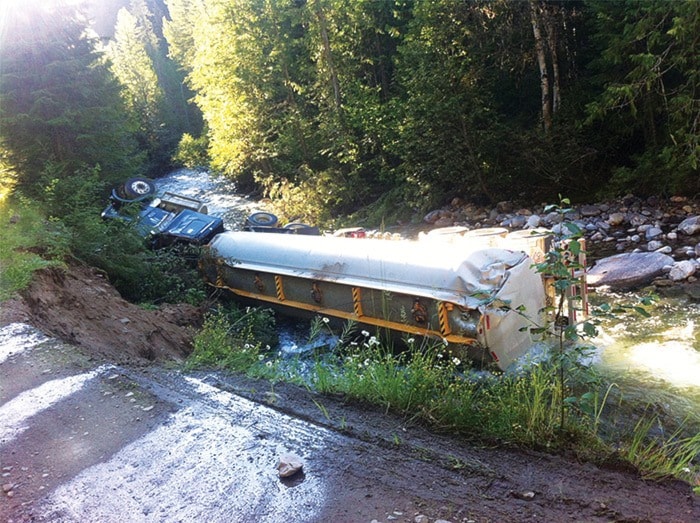Interior Health has released an internal report detailing their findings and recommendations following the July 26, 2013 jet fuel spill in Lemon Creek, finding that its response was inefficient.
Based on a debrief in the fall of 2013, the document summarizes the findings of their review.
“This was a really, really significant event that had a major impact on the community and the residents that live in that area. It was a very significant event for [Interior Health] as well because while we recognized some things went really well, there were some things that we think could have gone better,” said Roger Parsonage, regional director of health protection for Interior Health.
He said the most significant finding of the report was that their response was too slow.
“The initial hours of the response overwhelmed us. That was particularly evident in the first 72 hours. So what we’ve taken from that is we need to mobilize resources much, much quicker and we’ve developed an interim emergency response structure,” he said.
They also hope to establish a toll-free number that can be scaled up quickly and easily to take public calls and respond to questions/concerns.
The aim is to have that phone number established by the spring of 2015.
According to the “key findings” section of the report, the initial response was provided by a manager, communications officer and the medical health officer, rather than coming through the health emergency management (HEM) on-call number.
“But not enough of them were brought in given the scope of the situation. The situation was chaotic with a significant workload, exacerbated by an initial inability to contact staff on the weekend,” the report reads.
It further states that they did not have an established emergency response structure with clear roles and responsibilities, and that there was no time to put one in place during the incident.
Parsonage said though the report is completed, their work in streamlining their future response process is ongoing.
“This is not something we’re going to do, then call it done and forget about it. I expect we’ll continue to test and modify these procedures, so that we’ll be prepared whenever we do have an event to respond to. I expect this is going to be a permanent part of how we do business,” he said.
He said the report was released in an effort to increase transparency and to regain public trust.
“We have tried to listen more carefully and respond to the needs of the community. What we’ve tried to do is be flexible and tailor our response to the concerns we’re hearing from residents.”
He said that wasn’t the case during the initial response.
“Our response was not very transparent until the issue was forced, and this likely fuelled some of the vocal public distrust of Interior Health and the resulting complaints to the ombudsperson,” reads the report.
Parsonage said they’ve already been able to take advantage of some of the lessons they learned from Lemon Creek.
“Several of these recommendations and resulting actions were used effectively in supporting Interior Health’s role in the response to Mt. Polley Mine’s tailings spill in August 2014,” reads the introduction to the report.
The full report is available online at interiorhealth.ca/AboutUs/Accountability/Pages/ExternalReviewsReports.aspx.
